
24/7 Wall St. Insights
- Nationwide, the cost of living tends to be higher in cities than in places outside of major metro areas
- Still, consumer prices can vary considerably from one city to another, and some New York State metro areas are more affordable for a broader range of incomes than others
- Also: 2 Dividend Legends To Hold Forever
The overall cost of living has climbed at a historic pace in recent years, and the impact on American families has been both financial and psychological. A recent survey conducted by the U.S. Census Bureau found that over 57% of Americans reported difficulty affording usual household expenses in the last week, and that more than 93% of adults in the U.S. have experienced stress related to higher prices in the last two months.
According to the Consumer Price Index, the rate of inflation began to rise in early 2021, and ultimately peaked in June 2022, when the price of goods and services were 9.1% higher than they were one year earlier. While inflation has been steadily falling in recent months, the CPI remains above the Federal Reserve’s 2% target rate.
While no corner of the country has been spared from rising consumer prices, in relative terms, the overall cost of living varies considerably across the United States. In New York state, for example, goods and services were about 7.6% more expensive, on average, than they were nationwide in 2022 — the latest year of available data. Likely due in part to a higher cost of living, 57.7% of New York households had difficulty paying for household expenses in the last week, and 93.5% of adults in the state reported stress resulting from rising prices. (Here is a look at the most expensive states to live in.)
Generally, Americans living in major cities are saddled with a higher cost of living than those in smaller, rural communities. According to the Bureau of Economic Analysis, goods and services are about 11.4% more expensive within U.S. metro areas than they are outside of metro areas.
In keeping with this pattern, goods and services are about 8.8% more expensive than average across all 13 New York metro areas, and 9.7% less expensive in non-metro areas. Still, the overall cost of living can vary meaningfully between one city in New York State and another. In New York’s least expensive metro area, consumer prices are about 10.4% lower than they are nationwide on average. Meanwhile, in the state’s most expensive city, prices are 13.0% higher than average. (Here is a look at the most affordable town in every state.)
Consumer prices tend to rise when demand for goods and services outpaces supply. Because cost of living is closely tied to consumer spending, it is no coincidence that more affluent areas are typically more expensive places to live than lower income communities. While there are exceptions, the median household income in some of the most expensive cities on this list is higher than the comparable statewide median income of $79,557.
This is the cost of living in every New York State metro area, ranked.
Why It Matters

Inflation, as measured by the Consumer Price Index, hit a multi-decade high in 2022, and as of July 2024, the CPI remains well above the Federal Reserve’s 2% target. Even though prices tend to be far higher in cities than in rural communities, the vast majority of Americans — 80% according to the U.S. Census Bureau — live in an urban area. Still, consumer prices can vary considerably from one city to another, and some metro areas in New York are more affordable for a broader range of incomes than others.
13. Utica-Rome, NY
- Overall cost of living, 2022: 10.4% lower than U.S. average
- Median household income, 2022: $64,203 ($15,354 less than statewide median)
- Median home value, 2022: $165,800 ($234,600 less than statewide median)
- Metro area population: 288,668
12. Binghamton, NY

- Overall cost of living, 2022: 8.0% lower than U.S. average
- Median household income, 2022: $63,427 ($16,130 less than statewide median)
- Median home value, 2022: $149,300 ($251,100 less than statewide median)
- Metro area population: 244,889
11. Glens Falls, NY
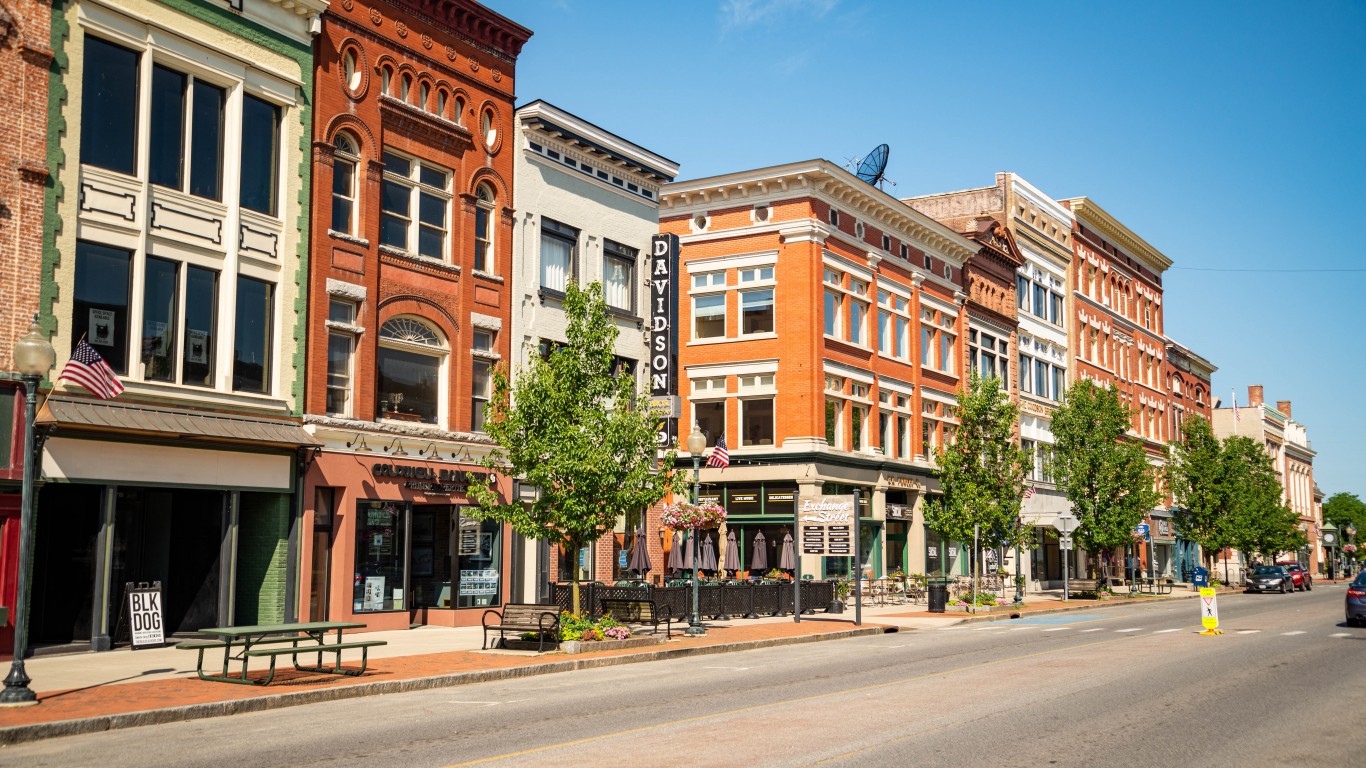
- Overall cost of living, 2022: 7.6% lower than U.S. average
- Median household income, 2022: $69,145 ($10,412 less than statewide median)
- Median home value, 2022: $232,300 ($168,100 less than statewide median)
- Metro area population: 126,440
10. Elmira, NY

- Overall cost of living, 2022: 7.3% lower than U.S. average
- Median household income, 2022: $55,845 ($23,712 less than statewide median)
- Median home value, 2022: $130,700 ($269,700 less than statewide median)
- Metro area population: 81,426
9. Syracuse, NY

- Overall cost of living, 2022: 6.6% lower than U.S. average
- Median household income, 2022: $68,304 ($11,253 less than statewide median)
- Median home value, 2022: $171,700 ($228,700 less than statewide median)
- Metro area population: 653,633
8. Watertown-Fort Drum, NY

- Overall cost of living, 2022: 6.2% lower than U.S. average
- Median household income, 2022: $56,423 ($23,134 less than statewide median)
- Median home value, 2022: $177,700 ($222,700 less than statewide median)
- Metro area population: 116,637
7. Buffalo-Cheektowaga, NY
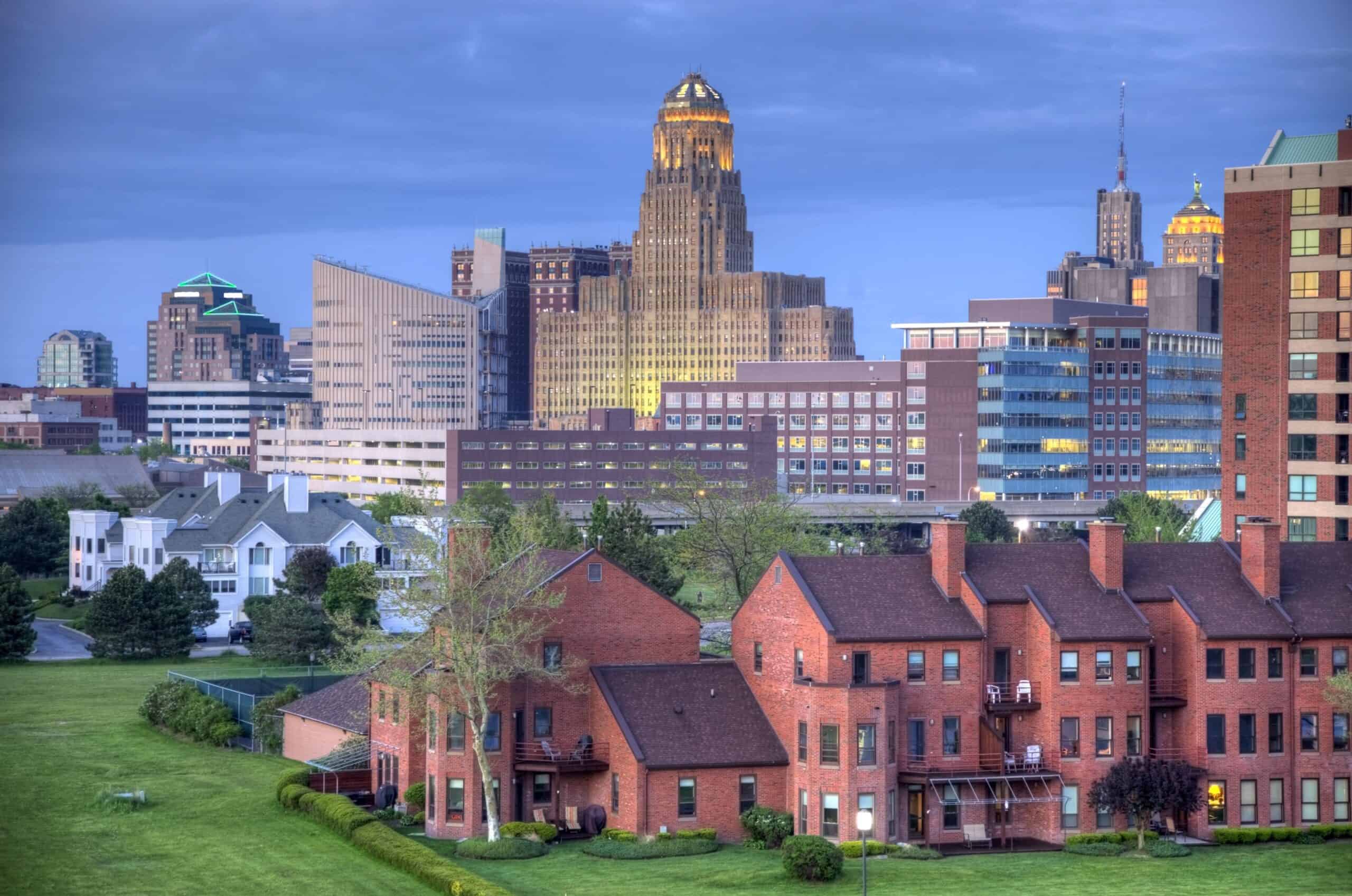
- Overall cost of living, 2022: 6.1% lower than U.S. average
- Median household income, 2022: $68,698 ($10,859 less than statewide median)
- Median home value, 2022: $219,300 ($181,100 less than statewide median)
- Metro area population: 1,161,192
6. Rochester, NY
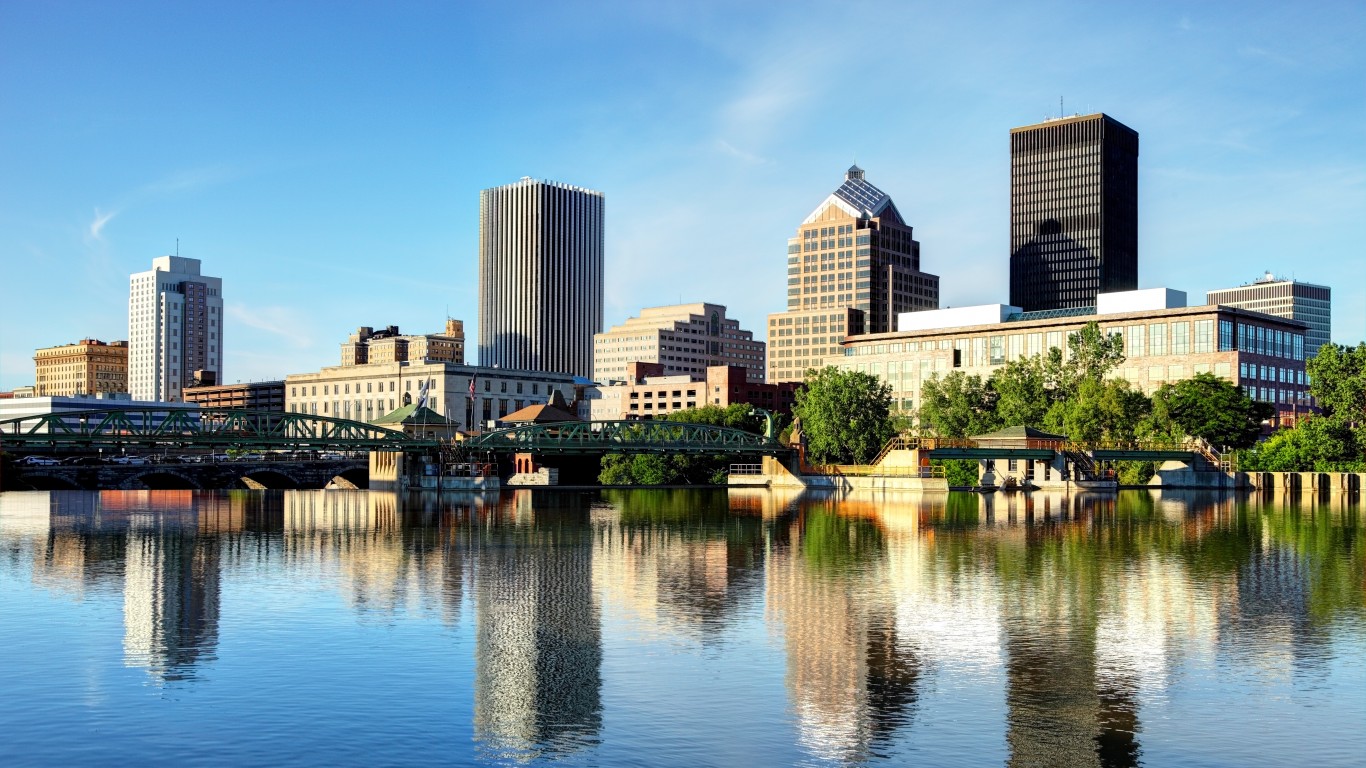
- Overall cost of living, 2022: 4.8% lower than U.S. average
- Median household income, 2022: $69,580 ($9,977 less than statewide median)
- Median home value, 2022: $190,900 ($209,500 less than statewide median)
- Metro area population: 1,081,152
5. Albany-Schenectady-Troy, NY
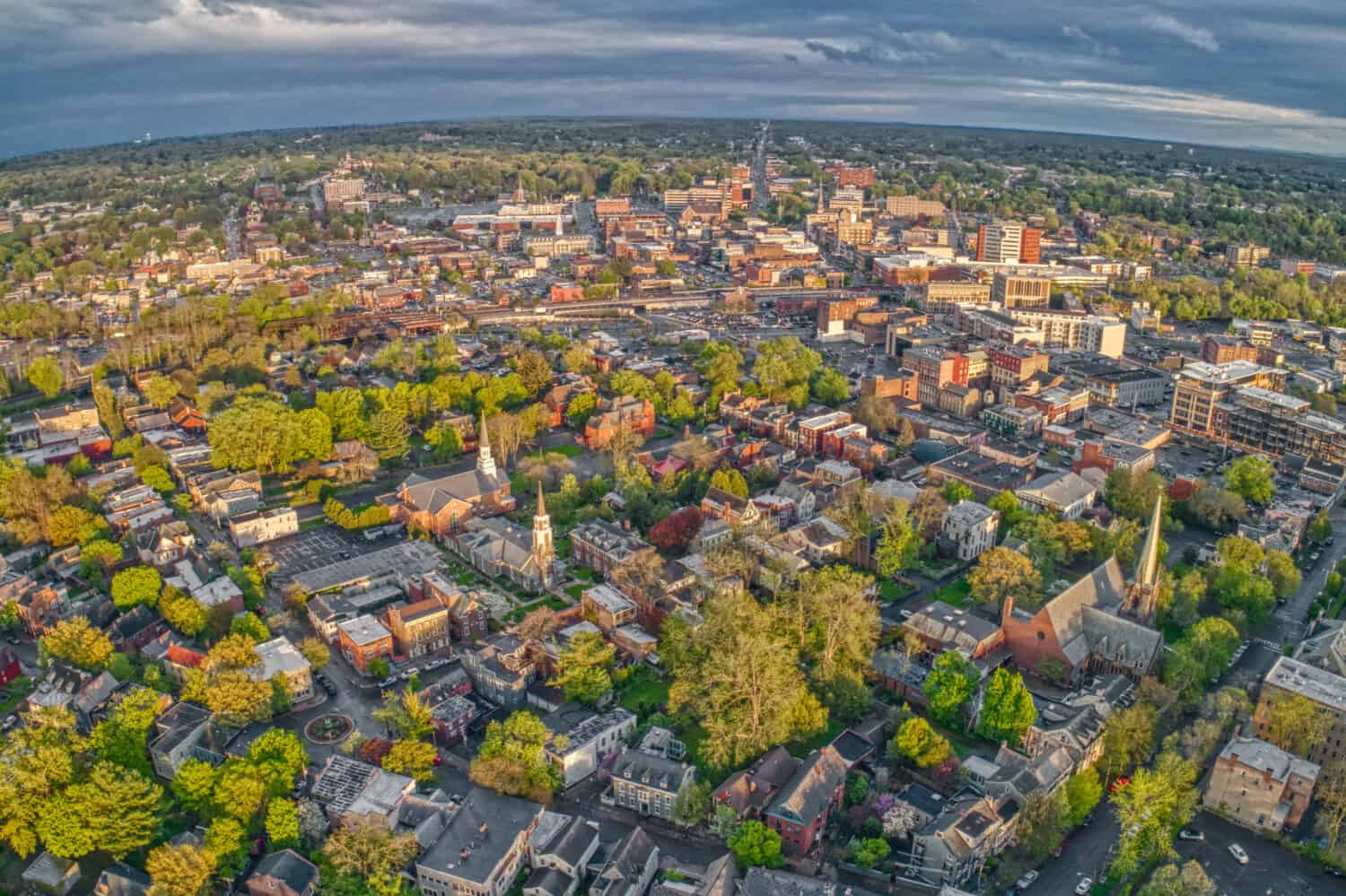
- Overall cost of living, 2022: 3.4% lower than U.S. average
- Median household income, 2022: $80,970 ($1,413 more than statewide median)
- Median home value, 2022: $269,600 ($130,800 less than statewide median)
- Metro area population: 904,617
4. Ithaca, NY

- Overall cost of living, 2022: 1.3% lower than U.S. average
- Median household income, 2022: $74,034 ($5,523 less than statewide median)
- Median home value, 2022: $283,000 ($117,400 less than statewide median)
- Metro area population: 104,777
3. Kingston, NY
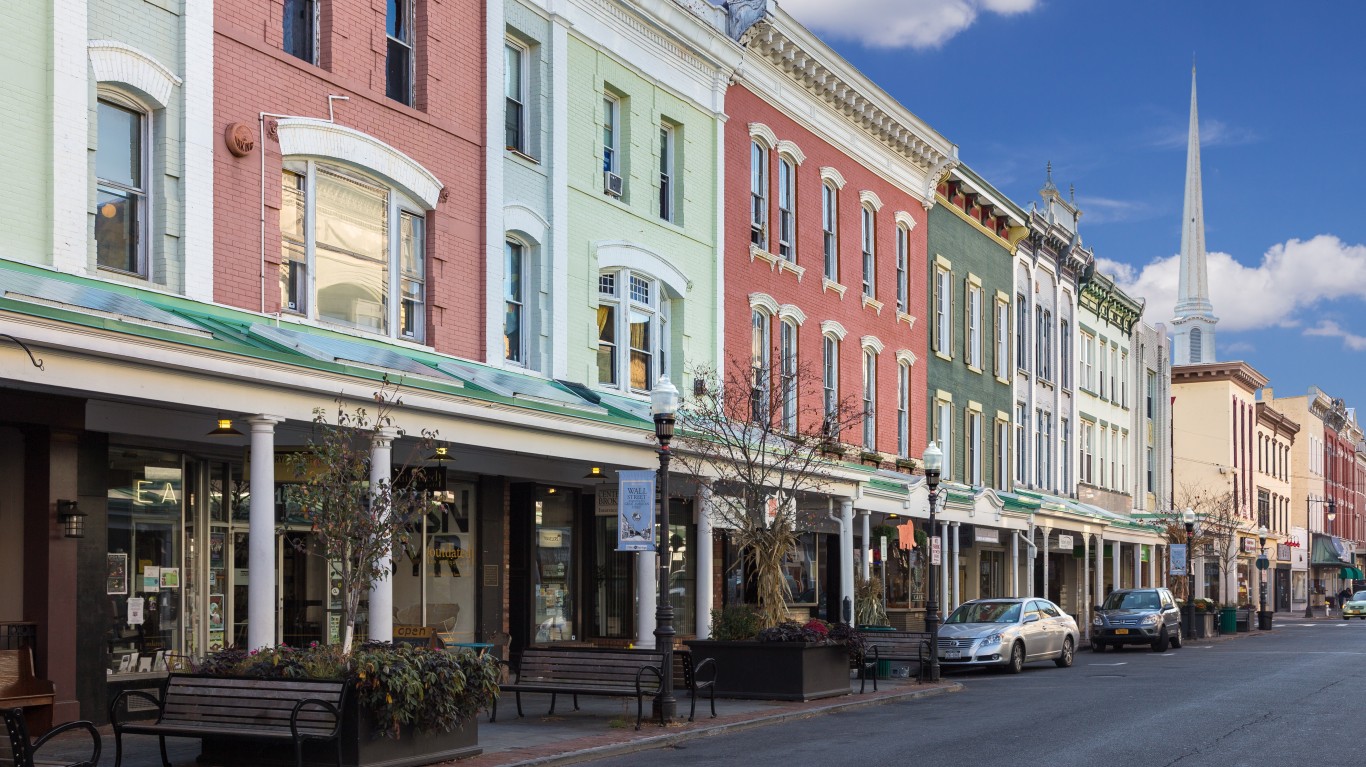
- Overall cost of living, 2022: 0.6% lower than U.S. average
- Median household income, 2022: $80,372 ($815 more than statewide median)
- Median home value, 2022: $337,100 ($63,300 less than statewide median)
- Metro area population: 182,319
2. Poughkeepsie-Newburgh-Middletown, NY
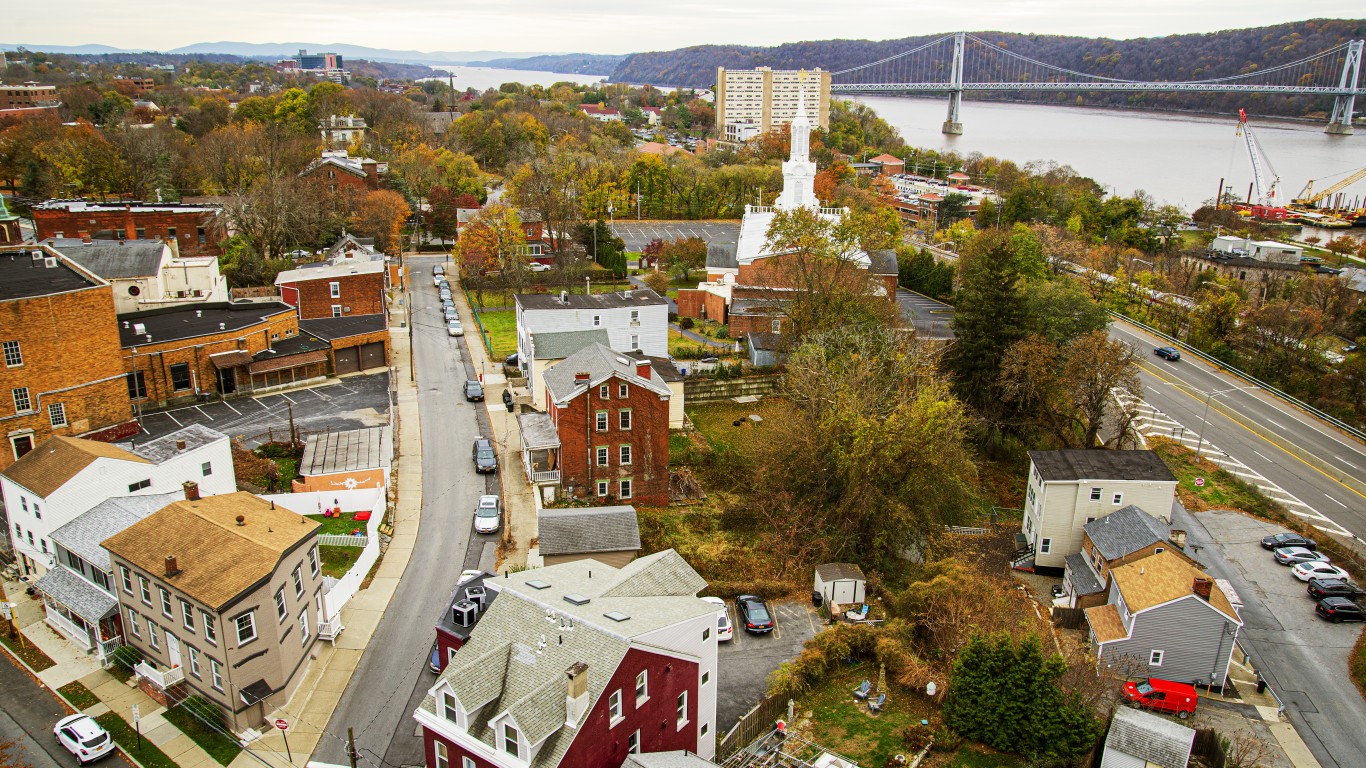
- Overall cost of living, 2022: 10.0% higher than U.S. average
- Median household income, 2022: $89,826 ($10,269 more than statewide median)
- Median home value, 2022: $373,100 ($27,300 less than statewide median)
- Metro area population: 703,486
1. New York-Newark-Jersey City, NY-NJ-PA

- Overall cost of living, 2022: 13.0% higher than U.S. average
- Median household income, 2022: $91,562 ($12,005 more than statewide median)
- Median home value, 2022: $578,800 ($178,400 more than statewide median)
- Metro area population: 19,617,869
Take Charge of Your Retirement: Find the Right Financial Advisor For You in Minutes (Sponsor)
Retirement planning doesn’t have to feel overwhelming. The key is finding professional guidance—and we’ve made it easier than ever for you to connect with the right financial advisor for your unique needs.
Here’s how it works:
1️ Answer a Few Simple Questions
Tell us a bit about your goals and preferences—it only takes a few minutes!
2️ Get Your Top Advisor Matches
This tool matches you with qualified advisors who specialize in helping people like you achieve financial success.
3️ Choose Your Best Fit
Review their profiles, schedule an introductory meeting, and select the advisor who feels right for you.
Why wait? Start building the retirement you’ve always dreamed of. Click here to get started today!
Thank you for reading! Have some feedback for us?
Contact the 24/7 Wall St. editorial team.




